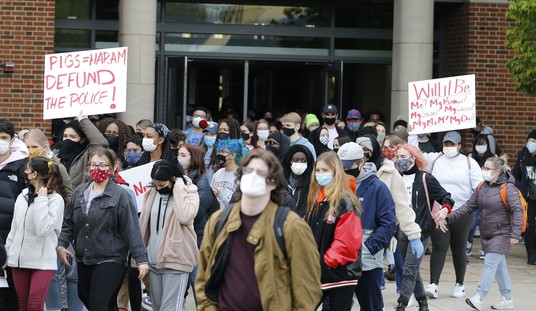[H/T The Daily Caller]
The news this past Friday mostly centered on covering Black Friday and issues relating to the events in Ferguson, but amid all of these stories, the CDC has released its latest abortion surveillance report. This year’s report looks at the numbers for 2011, since those are the most recent ones available. There is a little good news in this report, but for the most part, the picture is still depressing. Let’s look at some of the most important numbers.
The report looks at 52 different reporting areas, which are the 50 states, the District of Columbia, and New York City. For this report, they received data from 49 of those areas. For trend analysis of the decade between 2002 and 2011, the 46 areas that had returned data all ten years were analyzed. The areas excluded from this 46 are Alaska, California, Louisiana, Maryland, New Hampshire, and West Virginia.
A grand total of 730,322 abortions were reported to the CDC in 2011, with 98.3% coming from the 46 areas that returned reports every year since 2002. The good news here is that the absolute number of abortions is down from previous years. In 2010, there were 753,065, and in 2002, there were 854, 122. The number of abortions in 2011 was the lowest in all 10 years surveyed.
While the total number is down from 2010 and 2002, there are still plenty of disturbing statistics in this report. In 2011, despite the downward trend, there were still 219 abortions per 1000 live births, which translates to just shy of 18%. Think about that: this means that almost 1/5 of all pregnancies ends in an abortion.
The report also presents a great argument for the traditional family structure. In the 37 areas that returned data for marital status in 2011, 85.5% of all abortions were from unmarried women. In other words, women who were legally married accounted for less than 15% of all abortions that year. As the Daily Caller (see the H/T) notes, “The proportion of unmarried women who have an abortion has actually increased, while abortion has fallen overall — in 2001, 81.7 percent of women who had an abortion were unmarried.”
A lot of digital ink has been devoted to explaining just how disproportionally bad abortion’s affect on the black community. This report does nothing to controvert that argument. While non-Hispanic white women were the source of a plurality of 37.2% of all abortions in the 27 areas that reported for race and ethnicity in 2011, non-Hispanic black women were right behind them, accounting for 36.2%. They also had the highest rate of abortion at 29.7 abortions per 1000 women. There is some good news here, though, as the rate of abortion has decreased across all ethnic groups since 2007 for the 21 areas that reported to the CDC consistently during that span. Here’s how the report details it:
For non-Hispanic white women, the abortion rate decreased 15% (from 9.3 abortions per 1,000 women in 2007 to 7.9 in 2011), for non-Hispanic black women it decreased 12% (from 34.8 abortions per 1,000 women in 2007 to 30.7 in 2011) and for Hispanic women it decreased 18% (from 20.7 abortions per 1,000 women in 2007 to 16.9 in 2011). In contrast, from 2007 to 2011, a large decrease (10%) in the abortion ratio occurred among non-Hispanic white women (from 144 to 130 abortions per 1,000 live births), a lesser decrease (2%) occurred among non-Hispanic black women (from 486 to 474 abortions per 1,000 live births), and a small increase (3%) occurred among Hispanic women (from 204 to 210 abortions per 1,000 live births).
Meanwhile, The Daily Caller notes just how bad of a problem the abortion rate among blacks is demographically:
That’s a serious skew — the 2013, the Census Bureau reported that in the U.S. at large, 62.6 percent of people in the country were non-Hispanic white alone, while 13.2 percent were black or African American alone.
In terms of age, women in their 20s still account for the majority of all abortions. In 2011, they accounted for 58% of the total. However, while the absolute number is still small, for women 40 and older, “abortion rates have shown a small yet persistent increase and the abortion ratio for this age group remains high.”
The report does not give the number of abortion-related deaths for 2011, but it does account for all reported abortion related deaths since 1973. Between 2002 and 2010, 77 of the reported deaths were due to legal abortion. Illegal abortions accounted for only 1 reported death, in 2004. However, it’s entirely possible–I’d personally say probable–that there were a few more deaths related to illegal abortion that were not reported, although I still think the total would be a lot smaller than the death count for legal abortion. However, that’s just my personal conjecture. The report says nothing about that.
This report makes no mention of the number of aborted unborn children who had any sort of mental or physical defect. We can look elsewhere to find some information on abortion rates in these cases. I’ll focus on Down Syndrome in particular. One 2012 survey of existing studies of abortion rates for prenatal Down Syndrome diagnoses found:
The weighted mean termination rate was 67% (range: 61%–93%) among seven population-based studies, 85% (range: 60%–90%) among nine hospital-based studies, and 50% (range: 0%–100%) among eight anomaly-based studies. Evidence suggests that termination rates have decreased in recent years.
Another survey of studies from the same year found that, among women who had received a positive prenatal diagnosis of Down Syndrome, between 89-97% aborted their unborn children. If anything, more work needs to be done examining these numbers.
If this report teaches us anything, it is that, while progress has been made, there is still a long way left to go before we can end the evil of abortion. With the most pro-abortion President in history still at the helm of the United States government, I don’t think we should realistically expect much progress to be made at the national level over the next couple of years. However, that shouldn’t stop us from trying. We can start by repealing Obamacare. The Burwell v. Hobby Lobby ruling might have struck a great blow for life and religious liberty, but the ACA’s contraceptive mandate is still on the books. The state and local levels present great opportunities to fight back against abortion. If you’re looking for news and opportunities, Breeanne Howe’s “The Vine” is a great place to start. We’ve got a long way to go, but we should not give up.













Join the conversation as a VIP Member